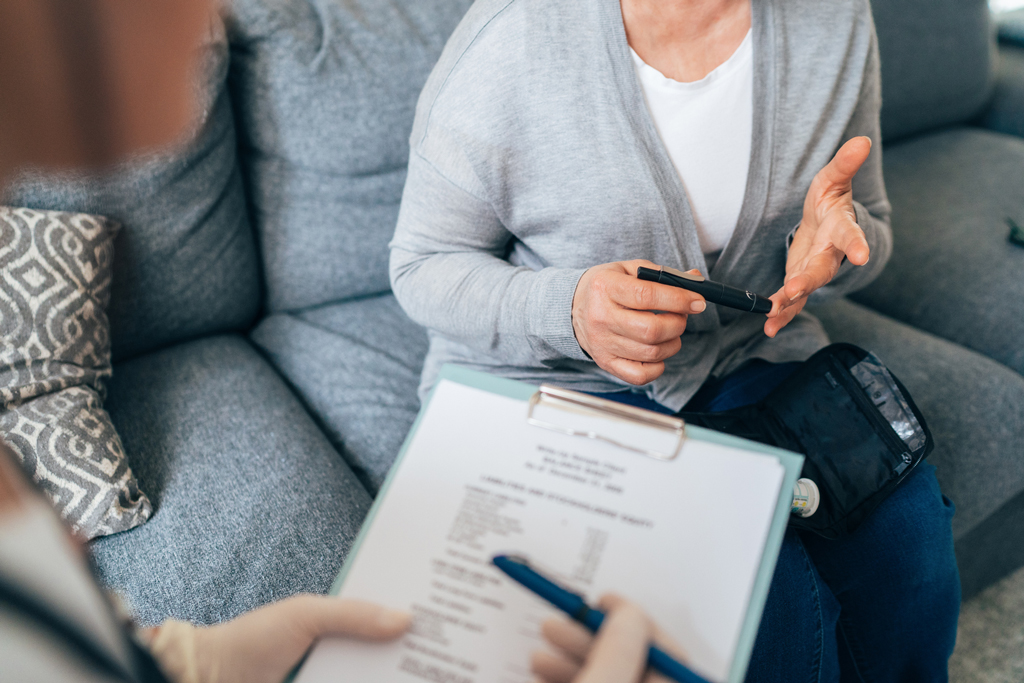Biological information is essential, as it can lead to more precise therapeutic targeting. But incorporating sociological and anthropological principles is just as important.
Why do so many people suffer the ill effects of type 2 diabetes, including eye disease, kidney disease and nerve damage, despite the fact that so much is known about preventing and controlling it? Why doesn’t everybody just do what they’re supposed to do? There are many reasons – some of them physiological, but others more socioeconomic- and cultural-related. And healthcare providers are paying attention.
For example, people who live in a food desert may lack access to – or money to afford – adequate amounts of insulin, or fresh fruits and vegetables. It’s unlikely they have a gym membership, and they may not even feel safe going for extended walks in their neighborhood.

In addition to socioeconomic factors are non-physical – cultural – ones. Perhaps strength training or vigorous exercise isn’t part of one’s culture. Perhaps we are talking about an Asian-American whose diet is heavy on white rice (high in carbs but low in nutrients), or an African-American patient who has difficulty trusting non-African-American doctors, or an Hispanic patient who has difficulty believing that an English-speaking doctor or nurse can understand the realities of their everyday lives and culture.
Practicing diabetes from a transcultural perspective doesn’t mean sacrificing science, according to proponents. Excellence of care is excellence of care – for everybody. No one, for example, would dispute the importance of monitoring blood glucose levels, eating healthily, watching one’s BMI or participating in vigorous physical activity. The job for physicians is helping people with type 2 diabetes from different cultures understand and achieve these goals. But it’s complicated.
The American Association of Clinical Endocrinologists deemed the topic important enough to publish a Position Statement on Transcultural Diabetes Care in the United States in July 2019.
Multicultural waiting rooms
Consider the challenges facing physicians whose patients come from multiple cultures, such as Jeffrey Mechanick, M.D., who practices endocrinology out of Mount Sinai Hospital in Manhattan.
“I see Latinos, African-Americans and Caucasians from the Upper East Side,” says Mechanick, who was chair of the AACE committee that published the transcultural care Position Statement. “We have a Jewish population, Asians, people from Africa, Latin America and Russia. And the same is true for physicians practicing in any number of large cities as well as smaller cities and rural areas. The ethnicity terrain is changing and multicultural.”
Mechanick has been studying transcultural diabetes care for some time. Ten years ago, he led a project to develop a transcultural diabetes nutrition algorithm. In 2015, he helped organize the AACE Pan-American Workshop in Costa Rica for endocrinologists from Latin American countries. Three years later, he participated in a series of “Diabetes Care Across America” summits in New York, Houston and Miami to examine cultural factors that influence diabetes care domestically.
On the evening before each of the one-day summits, organizers invited local community leaders to share their perspectives on diabetes care among their communities, he recalls. “We took notes and as a result were better informed on conference days,” recalls Mechanick. “For example, we recognized that a good percentage of African-Americans are of Caribbean descent. Regarding Native Americans, we learned how important it is for them to feel that they matter and that we understand and acknowledge the trauma Native Americans have endured in Canada and the United States.”
The 2019 Position Statement reflects many of the lessons learned. “Transculturalization is a necessary part of optimal endocrine care, with a specific attention to diabetes care,” the authors wrote. Biological information is essential, as it can lead to more precise therapeutic targeting, including lifestyle interventions and specific pharmaceuticals. But incorporating sociological and anthropological principles is just as important. “This approach facilitates effective health messaging for behavioral change on the part of both the patient and health care professional(s).”
Making the transition
Some first steps to prepare a diabetes practice for an ethno-culturally diverse patient population include:
Gaining experience with lifestyle and behavioral medicine, especially motivational interviewing.
Creating a safe clinical environment.
Incorporating translation services, wearable technologies, web-based resources and community engagement.
Relying on clinical trial evidence that best reflects the ethno-cultural attributes of individual patients, in order to help them adjust traditional eating patterns to more healthy options that are still acceptable to them, provide flexibility in lifestyle and medication recommendations that take into account cultural factors, and using community-based resources to improve implementation.
Says Mechanick, “Even though you have different populations in different socioeconomic strata, there’s no excuse for different levels of excellent care. You may have to adapt it based on formularies or other resources, but that doesn’t excuse you from striving for that one standard of care.”
What factors affect diabetes care?
In its 2019 Position Statement on transcultural diabetes care in the United States, the American Association of Clinical Endocrinologists listed many of the factors that healthcare providers must consider when caring for a multicultural patient base.
Physician (“human-made”) factors
- Healthy food supply/availability (stores, restaurants, schools, workplace).
- Fitness resources (walking/running paths, gyms, school programs, parks).
- Building design (stairs, elevators, walking distances, handicapped access).
- Safety (surveillance, transportation, city/community design, energy supply).
- Pollution (water supply, endocrine disruptors, air, food chain).
Non-physical (transcultural) factors
- Ethnicity (physical and nonphysical human factors).
- Belief structures, behaviors, customs and attitudes (toward food, physical activity, healthcare providers).
- Social factors (screen time, family structure, appearance in public).
- Economic factors (affordability of healthy – and dependence on unhealthy – lifestyle components).
- Political factors.
- Religious factors.
- Stress (crime, economic, personal; at work, at school, at home; sleep hygiene, comfort foods, food security).
- Disparities, discrimination, stigmatization (age, gender, race/ethnicity, economic class).
Source: Transcultural diabetes care in the United States – A position statement by the American Association of Clinical Endocrinologists, May 2019.
